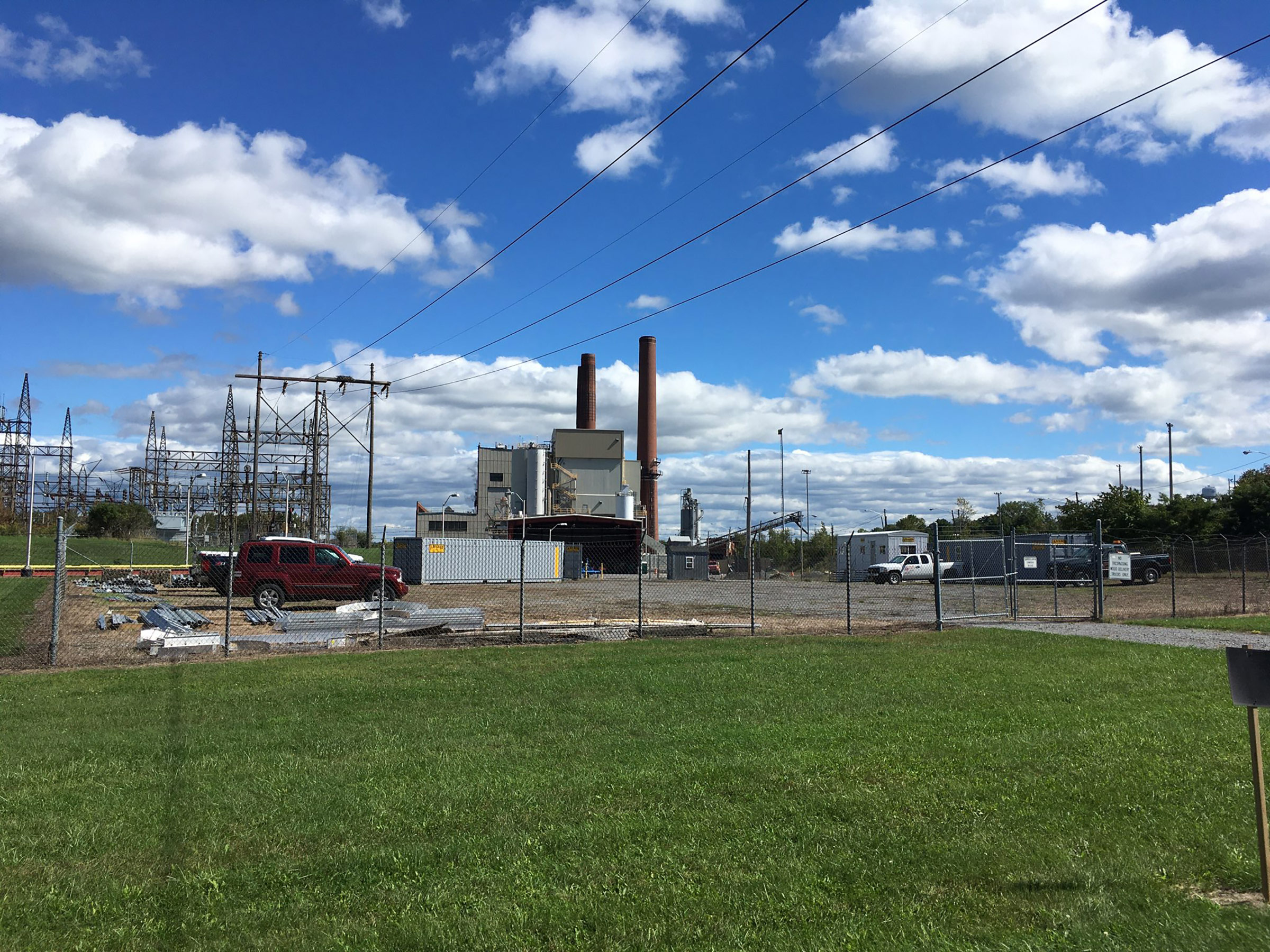
When I reach Rick Rainey on the phone, he’s barreling down a highway in his Subaru with samples of Riesling in tow. “I’m out here spreading the Finger Lakes love,” he tells me—which means, he’s testing his winery’s wares on potential buyers and acting as de facto ambassador for his rural pocket of New York, known as a wine-country escape with unique glacial lakes (and brutal winters). But the area has also become a flashpoint because, like a growing number of areas across the U.S., it’s contending with an unfamiliar neighbor: Bitcoin.
For people like Rainey, who spends a lot of time thinking about dirt and weather, the company in question, Greenidge Generation Holdings, represents an outside force that hogs energy and water resources to mine cryptocurrency. For one thing, it sucks in and spits out millions of gallons of water each day, as a consequence of its steam-powered turbines. Rainey says: “You come to the winery, you sit down, and I hand you a glass. It’s tangible. It’s very there. The Bitcoin thing—it’s millions of gallons of warm water being dumped back into the lake every day and we all go, ‘For what, again?’”
And he’s not alone. When it comes to understanding Bitcoin, though, it’s clear environmental advocates know what it is, because they’ve had to become experts over the last year in their fight for more oversight of the former power plant-turned-Bitcoin-mining operation.
The intricate details of Bitcoin’s global environmental impact have long been debated, unpacked in online conversations, white papers, and studies. Critics say mining is wildly inefficient, using as much energy as some small countries. Nic Carter of Castle Island Ventures wrote last year: “Bitcoiners are forced to defend the costs of this industry while the critics enjoy an apparently conscience-free right to selectively question the energy uses of specific industries.”
But now these abstract, longstanding debates feel, as Rainey says, very there.
A version of this story first appeared in the Climate is Everything newsletter. To sign up, click here.
Concerns are coalescing not just in New York but in Kentucky, West Virginia, Oregon, Texas, and more—questioning how much local economies are really benefiting from crypto mining, especially given the energy and environmental impact tradeoffs. Oregon’s Democratic Sen. Ron Wyden, Senate Finance Committee chair, is probing crypto-mining companies to show they’re having the promised positive impact on distressed communities. And on March 29, a coalition of heavy-hitting environmental activists launched a new campaign, Change the Code, Not the Climate, demanding that Bitcoin reduce its environmental footprint.
While powerful crypto players like Ethereum are working to dramatically reduce their energy use, it’s easier said than done for Bitcoin.

And for Yvonne Taylor, vice-president of Seneca Lake Guardian, an organization opposing Greenidge, it’s not just about the broader climate impact—local impacts are front and center, too. “They’re going to be emitting over a million tons of CO2 equivalents into the atmosphere every year, in addition to harmful particulate matter,” she says. In farm country, she says, that’s a huge problem for delicate crops like grapes.
Another major concern includes the intake and discharge of millions of gallons of lake water, as Rainey mentioned. Residents argue that returned lake water is warm enough to cause problems for wildlife, and some have even said that parts now feel like a hot tub. Greenidge, however, fiercely denies these claims. The company says in a statement, “We fully adhere to our existing air and water permits and will continue to do so.”
“One thing the Greenridge story really highlights is the materiality of these technologies,” says Elizabeth Renieris, professor of tech ethics at the University of Notre Dame, “Just as with the conversations around data, AI, and cloud computing before, blockchain and cryptocurrencies often rely on ethereal terms … to obscure the physical and material impacts of the tech, including, in this case, very real environmental and social impacts.”
“I’ve never once said you shouldn’t invest in cryptocurrency,” says Rainey. “Do whatever the hell you want to do. I also have the right to push back. We will do what anyone would do, to protect a backyard. This is a climate on the edge.”
Recently, advocates against Greenidge thought they were facing something of a precipice. They expected a major decision from New York’s Democratic Gov. Kathy Hochul, which could have denied an upcoming air permit renewal or even declared a moratorium on this kind of crypto mining. Instead the Department of Environmental Conservation delayed a decision until later this summer. It’s the second time this permit renewal has been pushed forward.
But it’s a decision that can’t afford to wait, says Taylor, and not just for her area— it’s one to watch for the country at large. She says that New York’s green laws are bolder than most, and the Finger Lakes region, though rural, is also partially wine-country-rich, and has more sway than some other places with crypto plants.
“This is a test case for how other underutilized or decommissioned power plants across the state are going to fall, and frankly, beyond,” Taylor says. “You’ll see dozens revving up and reopening again to guzzle fuel and cause problems in other communities. We’re kind of ground zero.”
More Must-Reads from TIME
- Donald Trump Is TIME's 2024 Person of the Year
- Why We Chose Trump as Person of the Year
- Is Intermittent Fasting Good or Bad for You?
- The 100 Must-Read Books of 2024
- The 20 Best Christmas TV Episodes
- Column: If Optimism Feels Ridiculous Now, Try Hope
- The Future of Climate Action Is Trade Policy
- Merle Bombardieri Is Helping People Make the Baby Decision
Contact us at letters@time.com